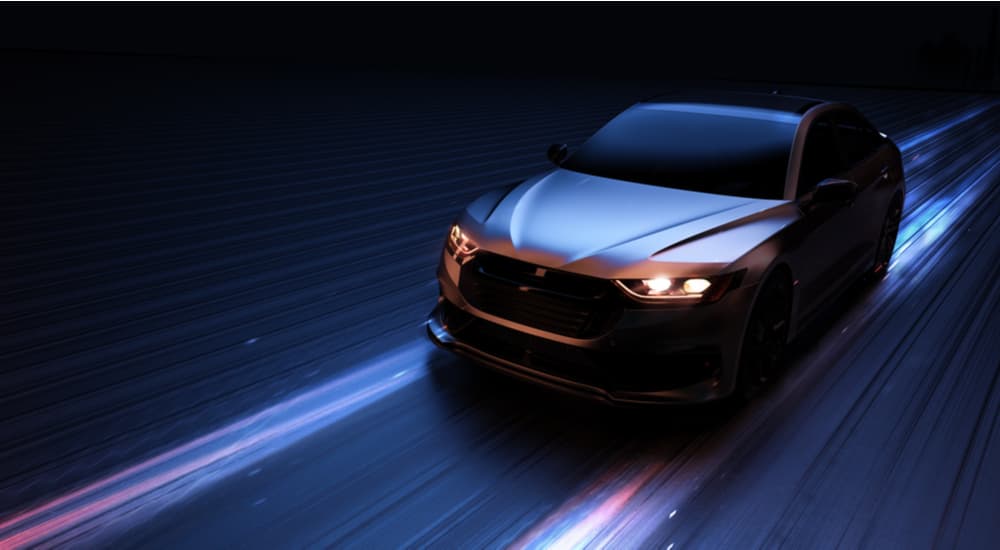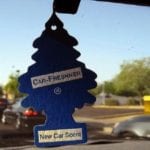Everyone wants the best car possible. There’s just one problem with that: how do you define the “best” car? For some, that means usefulness – the ability to haul large amounts of equipment or navigate quickly from Point A to Point B. For others, that means reliability. No one likes breakdowns, but having a vehicle you cannot depend upon is a dealbreaker for many drivers. And then there’s the “cool” factor. While many of us will sacrifice some cool points for a car that makes sense for our lives, everyone wants at least a little bit of cool. Therefore, when looking for the best online car dealer, you’re probably incorporating a little of each category in your search.
Lucky for you, we’ve compiled a list of the best 10 cars in the world. Unfortunately, you won’t find them at even the very best online car dealer’s website; in fact, you might have more success at an auction house. Since determining what makes a car “the best” is so hard, we’ve chosen a few of the most popular cars in the world to determine how they rank based on usefulness, reliability, and coolness. See for yourself which vehicle best fits your driving needs.
The Car: Ecto-1
Country of Origin: United States
Classification: Transportation and equipment storage for professional paranormal investigation and elimination service
The Ghostbusters’ Ecto-1 is a 1959 Cadillac Miller-Meteor Futura Duplex, of which only a few hundred were produced. There was a time when Cadillac produced bare chassis for various businesses, namely ambulances, hearses, and flower delivery vehicles. Miller-Meteor, along with other companies such as Superior and Eureka, would purchase a Cadillac’s Series 355 frame, fitted with a V8 engine and air suspension, then add doors, a roof, glasswork, and more to supply their clients with the vehicle they requested. A “Duplex” version is special, as it can be used as a hearse or an ambulance. Or, in this case, a mobile ghostbusting laboratory.
According to Dr. Ray Stantz, the vehicle in the movie “needs suspension work and shocks, brakes, brake pads, lining, steering box, transmission, rear end…maybe new rings, also mufflers, a little wiring.” Evidently, this was true in real life, as well. Ecto-1 was a barn find, and all of those backfiring and billowing black smoke takes aren’t special effects.
Still, where else will you find a vehicle with ideal storage space for four Proton Packs, Ecto Goggle, PKE Meters, and traps? Not to mention the Muon Scrubbers, Radio GPS Locator, High Intensity Microfoams, and EMF Scrubbers attached to the roof racks.
Usefulness: 5
Reliability: 2
Cool Points: The kids love it.
The Car: DeLorean DMC-12
Country of Origin: Dunmurry, Belfast, Northern Ireland
Classification: Time machine
Doc Brown invented his automobile time machine in 1955 after a bathroom fall. This was long before the DeLorean had been invented, so surely his flux capacitor was designed to fit a variety of vehicles. In reality, at least six DeLorean DMC-12s were employed in the making of the Back to the Future series, and even they had to be tinkered with to meet the needs of Doc’s amazing machine.
Real-life DeLoreans were slow, with a top speed of 130 miles per hour and a 0-60 miles per hour acceleration time of 10 seconds. In fact, vehicles at its time of production weren’t permitted to go 88 miles per hour due to the fuel crisis – the original speedometer in a DeLorean only displays speeds up to 85. Therefore, the crew put a Porsche engine under the hood for Doc and Marty, and the rest is history… or maybe it happened in an alternate future.
The DeLorean time machine performs its job very well, as long as you have plutonium, a great supply of trash, or enough fuel to get up to 88 miles per hour. In fact, it’s great on really, really, really long road trips.
Usefulness: 5
Reliability: 3
Cool Points: 1.21 gigawatts worth
The Car: 1961 Ferrari 250 GT California Spyder
Country of Origin: Mondena, Italy
Classification: Cameron’s father’s “Love and Passion”
If your heart broke at the very end of Ferris Bueller’s Day Off, when Cameron’s father’s car… well, no spoilers, but let’s just say it’s going to take a lot of effort to buff that out. But good news: No Ferrari 250 GT California Spyders succumbed to that particular fate.
In fact, the vehicle that actually made it to the screen for driving scenes is a very good replica: a 1985 Modena Spyder California. With a small block Ford V8 engine and a Ferrari-esque exterior, several of these replicas were made for filming, though actual Cal Spyders do appear in still shots.
To this day, the Cal Spyder is one of the most sought-after classic Ferraris, due in large part because so few of them were produced. In fact, if you’re looking for your own love and passion, it may set you back a cool $18 million, which was the price a real 1961 Ferrari 250 GT California Spyder fetched recently at auction.
Usefulness: 0 (based on current location and condition)
Reliability: 0
Cool Points: All of them
The Car: 1963 Volkswagen Beetle
Country of Origin: Germany
Classification: Sentient race car and caring companion
Lots of people love their cars but rarely does the car love us back. Such is not the case with Herbie the Lovebug, a 1963 Volkswagen Beetle. He’s a VW that has your back.
Allegedly, Walt Disney Studios spruced up 11 Beetles for the first Herbie movie, and the total number of bugs used in all the “Herbie” films combined numbers in the hundreds. Much like each generation of the real deal from Volkswagen, each movie-Herbie is slightly different, though always decked out in his red, white, and blue racing stripes.
The actual vehicle came standard at the time with a 1.2L 4-cylinder engine, good for 40 horsepower. Ergo, it stands to reason that some movie magic was required to help Herbie become a track star in the form of a Porsche Super 90 engine. Other fun factory-fitted features of the 1963 Beetle included sunvisors, an overhead light, and automatic windshield wipers. They absolutely could not drive themselves, however.
Usefulness: 5… when he wants to cooperate
Reliability: 5
Cool Points: 5
The Car: 1968 (and before) Mini Cooper Mark I
Country of Origin: England
Classification: Getaway car
Both versions of the film The Italian Job feature a fleet of Mini Coopers; however, the 1969 original includes 16 pre-1968 Mark I models… may they all rest in peaceful pieces. Filming the movie involved a lot of difficult stunts, such as driving through sewers, jumping from roofs, and cruising along railroad tracks. Legend has it that all that survives from the shooting are boxes of parts.
Interestingly enough, the Coops could have been Fiat 500s. Gianni Agnelli was willing to donate a fleet of Fiats, while the British Motor Corporation refused to let the crew have the Minis for anything less than trade price. That being said, the bad guys did end up with the Fiats.
Painted red, white, and blue for their heist, the 1968(ish) models would have been factory outfitted with a very small engine that provided 75 horsepower. This would make cruising around with 300 pounds of gold cumbersome, so at least one of the cars was given a 1800cc B-series engine to perform the task.
Usefulness: 3
Reliability: 5
Cool Points: 5 in the movie, 0 in current condition
The Car: 1964 Aston Martin DB5
Country of Origin: MI6 Clearance Required for Details
Classification: Classified
You don’t become an international super spy without an impressive team behind you, and thanks to the tinkering of Q on behalf of MI6, James Bond’s 1964 Aston Martin DB5 is perhaps the best companion possible for the agent who always works alone. The iconic Aston Martin DB5 made its first appearance in 1964’s Goldfinger and has continued to appear alongside Bond in many films since, including the recent No Time to Die.
The car itself is absolutely gorgeous, but the standard equipment list is where the DB5 really excels. Long before GPS navigation, Bond’s car featured a map-based satellite tracking system, along with machine guns, water cannons, ejector seat, champagne cooler, and shredding blade wheels. Of course, that’s just some of the features we’re aware of. Who knows what else British Intelligence has stashed in there?
Usefulness: Top Secret
Reliability: 5
Cool Points: 007
The Car: 1961 Jaguar E-Type
Country of Origin: Swinging England
Classification: Shaguar
When Enzo Ferrari tells you your car is sexy, you listen. The Jaguar E-type is one vehicle that has received such honors, which is how it won the part of Austin Powers’ Shaguar in the films chronicling the adventures of the “International Man of Mystery.” In fact, star Michael Myers once referred to the vehicle’s sensuality as “almost obscene.”
Two Shaguars were built for the films, each equipped with a 4.2L inline-6 engine that provided 265 horsepower and a 0-60 mile per hour acceleration time of 6.3 seconds. The fastest car ever? No, of course not. But the Shaguar isn’t designed to make speed records; its whole purpose is to make you randy, baby, yeah!
And of course, the Shaguar has its collection of nifty tools, including sat-com screen, map tracking, and distinctive Union Jack paint job.
Usefulness: 5
Reliability: 5
Cool Points: Oh, behave!
The Car: 1976 Lotus Esprit Series I
Country of Origin: United Kingdom
Classification: Spy Car/Submarine
Rounding out the collection of international spy cars is the 1976 Lotus Esprit Series I driven by James Bond in The Spy Who Loved Me. Borrowing the 5-speed manual transaxle transmission used in the Citroën SM and Maserati Merak, this was a vehicle made for performance, but not necessarily speed. With a top speed of around 133 miles per hour, it wasn’t the fastest possible vehicle. But then again, it was carrying cement-blaster cannons and equipment to transform into a submarine. Surely that impacts the curb weight.
Known in the Bond Universe as the QST/A117 Submersible, the Lotus Esprit not only transforms into a submarine in water and back into car form on land, it features a variety of aquatic gadgets. Surface missiles, black dye cannons, mines, and torpedoes are all aboard for underwater defense.
In 2013, Elon Musk purchased the vehicle for nearly $1 million and allegedly used it as the inspiration for the upcoming Cybertruck. That means it is entirely possible that “fire ink cannons” will be a future Tesla voice command, thus changing the way we drive forever.
Usefulness: 3 as a car, 5 as a submarine
Reliability: 5
Cool Points: At least $1 million worth
The Car: 1968 Mustang GT 390
Country of Origin: United States
Classification: The car that made chase scenes cool
Steve McQueen was known for his appreciation of speed, power, and a good, throaty engine roar. In the film Bullitt, McQueen has the honor of chasing a 1968 Dodge Charger through the streets of San Francisco in a Highland Green 1968 Ford Mustang GT 390. It’s perhaps one of the most iconic car chase scenes of all time, simply because there is so much gorgeous steel on the screen at once.
McQueen did many of the stunts himself, though professional driver Bud Ekins was also on hand. Under the hood was a Ford 390ci V8, in case you were wondering what type of engine is required to become airborne in San Francisco. Not only did McQueen fall in love with the Mustang, which he tried several times to purchase before his death in 1980, but so did the driving public. Ford has released Bullitt editions of the Mustang to commemorate this particular model.
Usefulness: 5
Reliability: 5
Cool Points: Legendary
The Car: 1973 Ford Falcon XB GT
Country of Origin: Australia
Classification: Dystopian interceptor
The Ford Falcon was the Australian response to the muscle cars and pony cars that were taking over the American auto scene in the 1960s and 1970s. According to Barry, the mechanic who pieced the vehicle together, the dual overhead cam engine and blower provide Mad Max’s mad machine with 600 horsepower. In reality, the XB GT included a 5.8L V8, and that enormous supercharger taking center stage on the Pursuit Special’s hood is just a prop.
Still, crank off the front bumper, add some fuel tanks and a seat for your dog, booby trap the whole thing, and you’ve got a vehicle worthy of a sequel. Mad Max 2: The Road Warrior includes several plot points that require the car, elevating it from a simple vehicle to an actual superstar.
Usefulness: 5
Reliability: 5
Cool Points: Are we allowed to call things “cool” in a dystopia?
The Car: Chitty Chitty Bang Bang
Country of Origin: Invention of British inventor Caractcus Potts (with input from Count Louis Zboroski)
Classification: It’s Chitty!
Another cool car from Ian Fleming, the same author who wrote James Bond’s magnificent cars into being, Chitty Chitty Bang Bang is a racecar, flying car, boat, and submarine all in one. Fleming based the Fantasmagorical Machine on the vehicles designed by Count Louis Zborowski, a very real race driver from the 1920s. Zborowski actually constructed four real Chittys, nearly all of which were based on Mercedes chassis. The very first Chitty featured a 2.3L V6 Maybach engine and reached over 100 miles per hour in her Brooklands Short Handicap race in 1921.
For the film, between 6-8 vehicles were created to handle all of Chitty Chitty Bang Bang’s duties. A road version, a filming version with extra controls, an engineless still shot version, and versions that can hover, fly, and drive on a built-in flotation device. The vehicle is also quite attractive, with aluminum and brass fittings; the boat version is made of red and white cedar. All in all, a ride that we all love.
Usefulness: 5 for all formats
Reliability: 5
Cool Points: 5
Which Is Your Favorite?
So there you have it: the best 10 cars in the world, or at least, what would be the best 10 cars in the world, in fully realized format. Are you more of an Ecto-1 type of driver, or would a submersible Lotus be more appropriate for your driving style?
Many of these vehicles have survived filming and years of promotion work, and several are displayed at museums around the world, meaning you, too, can visit with your ideal vehicle. Of course, you can always load up one of these classic films and ride along with the stars as they bring these magnificent vehicles to life without leaving the sofa.
And, while you’re there, watching engines rev and enjoying some popcorn, remember that you can visit your online car dealer while you watch. For inspiration, of course.



